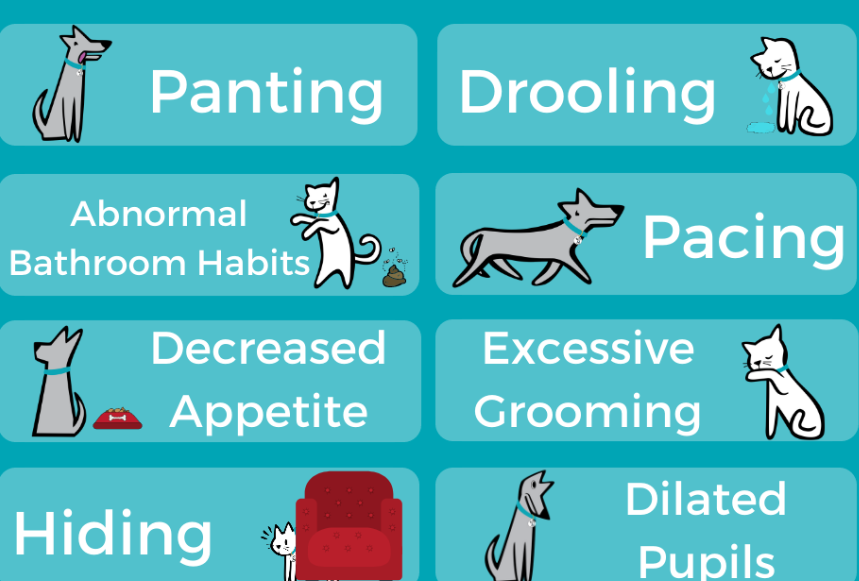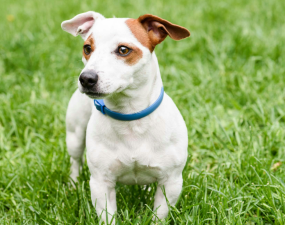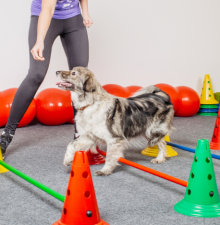Dogs are our most loyal companions. They accompany us through countless happy times with their innocent eyes and unconditional love. However, dogs also have their own emotional world. When they feel stressed, they will send out some distress signals.


Dogs are our most loyal companions. They accompany us through countless happy times with their innocent eyes and unconditional love. However, dogs also have their own emotional world. When they feel stressed, they will send out some distress signals.
- Frequent licking of the forelimbs: When dogs feel anxious or stressed, they may seek comfort by licking their forelimbs. This may be a behavior caused by uneasiness or tension.
- Frequent licking of the nose: When dogs feel nervous or uneasy, they may lick their noses to calm down. If a dog exhibits this behavior when being reprimanded, it means that it may feel nervous and uneasy.
- Hiding and avoidance: When dogs feel stressed, they may hide behind furniture, curtains, or even avoidance behaviors, unwilling to leave a place or participate in daily activities.
- Increased problem behaviors: If the dog is under too much stress, more problem behaviors may occur, such as barking constantly, destroying furniture, and defecating everywhere. These behaviors may be a manifestation of the dog's inability to control his emotions.
- Decreased appetite: When dogs feel stressed, they may experience loss of appetite. Even their favorite food cannot stimulate their appetite.

These daily scenes are triggering dogs' "stress alarms"
- Sudden changes in the environment are like passing a level
When moving or fostering a new family, unfamiliar smells and spaces will cause dogs to fall into constant anxiety. A netizen's Shiba Inu curled up in a courier box and whimpered for three consecutive days due to frequent moves, and refused to eat until the old bedding was put back. Long-distance transportation is even more dangerous. The bumps and odors in the closed compartment may cause motion sickness and vomiting. If the high temperature is superimposed, it is very easy to dehydrate and shock.
- Critical attack on sensitive senses
Dogs have four times the hearing of humans. Thunder, firecrackers or vacuum cleaners are like "nuclear explosions" to them. The owner of the golden retriever Niuniu described: "Last New Year's Eve, it was scared by firecrackers and ran into the closet. The next day, it was found that the door of the closet was scratched with deep marks and its claws were all bloody." Sudden bright light and pungent smells (such as perfume and durian) can also trigger defensive baring or incontinence.

Humans "do bad things with good intentions"
• Forced social interaction: Guests forcibly touch the hiding dog, which may trigger a growl warning;
• Violent bathing: Border Collie Tank collapses and drools every time he enters the bathroom. The pet behaviorist found that it was due to the shadow left by the shower head when he was young;
• Sudden change of food: Diarrhea caused by imbalance of intestinal flora is often a distress signal of dietary stress.
How to help dogs release stress
After understanding these signals, as owners, we can take the following measures to help dogs release stress:
- Increaes attention and companionship: Interact and talk more with dogs, so that they can feel the love and attention of the owner. This helps to enhance the self-confidence of dogs and reduce their stress.
- Provide toys and games: Provide dogs with a variety of toys and games to let them release stress while playing. At the same time, you can also increase the dog's physical activity through olfactory games, chasing games, etc.
- Increase walking and play time: Take the dog out for a walk and play, let them get in touch with nature and other pet partners. This helps to relieve the dog's tension and release accumulated stress.
- Provide new experiences: Take your dog to new places or commercial facilities to expose them to new people and things. This helps broaden the dog's horizons and increase their self-confidence and adaptability.
- Improve the living environment: Provide a comfortable and safe living environment for the dog so that they can live in peace. For example, put away fragile items and avoid noise interference.



